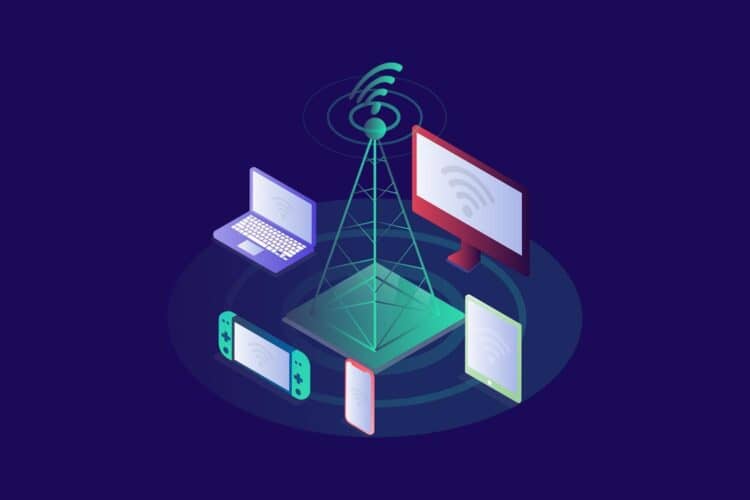Cellular networks provide a wireless alternative to landline telephones and broadband Internet service. These networks can deliver high-speed data transmission services at affordable prices. Constant connectivity makes people respond more quickly to natural disasters or critical home repair services. For school leaders, mobile communication is the best way to engage with low-income families.
Access to Education
Mobile communication technology allows low-income students and their parents to stay in touch with school information. Rather than having to schedule meetings or travel, families can receive texts with important school notifications and updates. This close connection between family and school can lead to more extraordinary student achievement, as studies show that children do better in school when their parents are highly involved in their education. Many communities benefit from the Lifeline program in Texas, a federal program that makes phone service and data plans more affordable for low-income consumers in the State. The discount helps people overcome barriers to accessing digital services, such as the cost of a handset, a monthly data plan, and the infrastructure required. Mobile technology is often hailed as a tool to give voice to the voiceless.
Access to Information
The right to information is the universal, legal right to access the records of public bodies. It empowers citizens to identify and fight corruption, promote transparency in governance, and accountability for policy decisions made by their governments. In poor contexts, the boundaries between public and private, family and work, and social and economic are blurred. Mobile phone ownership is often crucial in maintaining and forming social networks that overlap with economic ties to facilitate trade, business, and community development.
Traditionally, it has been harder for school leaders to communicate with lower-income families, as contact information like home addresses and phones can change regularly. However, with a school mobile app, communication can be direct and consistent, even for those without stable homes or jobs. This direct and consistent communication is what many lower-income communities need from their school districts. Providing school announcements in a mobile app is a great way to provide this. It eliminates the need for a central address or phone number, which can be prone to changes, and ensures that all parents get essential updates on their children’s education.
Access to Health Care
Low-income families face a variety of obstacles when it comes to accessing health care. These include illiteracy, problems with health insurance, and mistrust of medical professionals. Acknowledging these barriers is the first step towards finding future sustainable solutions. High out-of-pocket costs are an enormous barrier to health care, affecting people in low-income brackets the most. People who live in poverty frequently have to decide between paying their rent, buying food, and going to the doctor. Healthcare professionals are increasingly deploying mobile treatment sites in rural areas to combat these barriers. These vans and trailers offer testing, treatment, and counseling services near patients’ homes. It helps minimize travel expenses, which is critical for rural communities. In addition, telehealth technology allows rural doctors to connect with their patients remotely over videoconferencing. It’s helpful for those with limited resources who can’t afford to travel to see their doctors for routine check-ups.
Access to Jobs
Mobile communication matters more than ever for low-income families when getting a job. Mobile devices enable people to access employment opportunities by connecting to the cellular network. This cell phone system transmits and receives radio waves at specific frequencies to create nationwide wireless coverage. A smartphone can also be an effective tool for maintaining and building social connections, particularly in poor contexts where the boundaries between public and private spheres and work and family are blurred. For example, in rural Mexico, mobile telephony has transformed how local farmers manage their business and economic activities by connecting them to other producers and customers over time, regardless of distance. School leaders also leverage mobile devices to communicate with parents, especially those from lower-income households. With the ability to send push notifications directly to smartphones, schools can ensure that parents know about important school information and can stay up-to-date. It is possible without parents needing to constantly update their address or phone number, a challenge for many lower-income households.
Access to Entertainment
Increasingly, digital services are seen as life-enhancing and essential for impoverished people, but the barriers to access remain. Affordability of handsets and data plans, access to enabling infrastructure, and often formal identification for SIM registration are all crucial factors that keep many from getting online. Mobile operators and other partners are helping to overcome these obstacles. A third of low-income Americans are smartphone-only Internet users, meaning they do not own a tablet or home broadband service but rely solely on their smartphones for online access. Families with this type of limited access quickly hit their data limits and may even see their phone service shut off due to late payments. It can limit the content available to them and impact learning outcomes. Research also shows that children use their mobile devices for entertainment and often enjoy watching videos on YouTube or playing games based on popular characters, such as those from television series. Having this access can help keep them quiet when parents need to work or do chores around the house.

